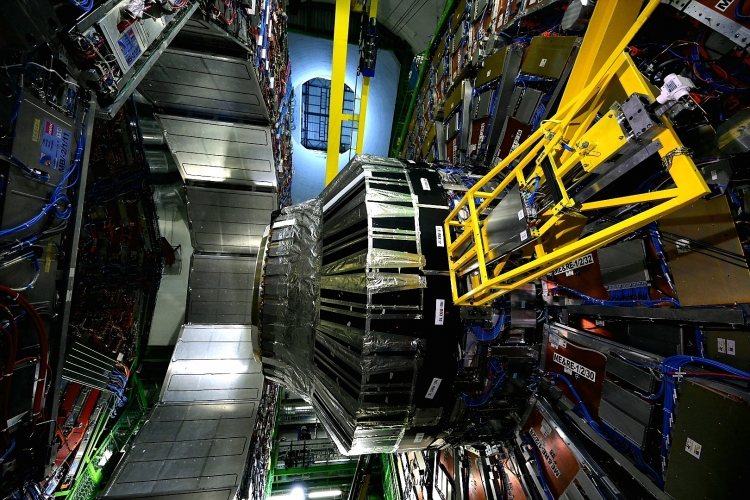
The CMS Gas Electron Multiplier (GEM) subsystem will form an extra layer of detectors, along with the Cathode Strip Chambers (CSC) layers, closest to the beam. The GEM's ability to cope with a very high particle rate will greatly improve muon measurement in this very difficult region. This will be especially important for the High-Luminosity LHC,when the number of collisions will increase by almost a factor of 10.
After a decade of planning, the work of countless people from all around the globe has finally come to fruition. Two GEMs superchambers, called GE1/1, have undergone rigorous quality control testing and were ready to begin their journey to Cessy, France, where they became the first of 72 superchambers to be installed into the Compact Muon Solenoid (CMS). Together, they will form the GE1/1 subsystem, the first completely new subdetector system to be introduced into CMS since it was built in the late 2000's. This subsystem will be located in the forward muon system of CMS, in the difficult η environment in front of the already-existing cathode strip chambers. The GE1/1 subsystem adds much-needed redundancy in a high rate / high background environment, allowing for better tracking and measurement of the bending angle at the trigger level. This in turn will decrease the number of mis-measured muons by permitting to lower the trigger threshold of soft muons.

With weeks of intense preparation leading up to this moment, the two superchambers were loaded onto a truck early in the morning on July 24th, 2019. Carefully secured within their transport, they were driven 10 km from the GEM production lab in Prevessin to the CMS Experiment in Cessy, where they were met by eager members of the GE1/1 and CMS Muon teams.
The CMS detector itself was built in slices on the surface and lowered down a deep shaft into the experimental cavern, 100 meters below the surface. With their arrival in the CMS assembly hall, the first of the GE1/1 superchambers would follow that same journey.


Finally, thanks to the care and effort of the team, the superchambers arrived in the experimental cavern, where they spent the night awaiting their installation into the CMS muon endcap.
Early on the morning of July 25th, technicians and team members arrived at Point 5 to begin the installation process. A specialized installation platform was built to hold and guide the superchambers into their place within the CMS endcap. This platform was supported by an overhead crane from the top, and tied to support structures on the bottom.
The CMS detector itself is three stories tall, with the endcap located in the center of the slice. In order to reach the detector installation location, technicians utilized scissor lifts to give them a steady platform to work on at the correct height.Throughout the installation process, members of the GE1/1 team were there to support the technicians and document this historic moment.

Finally, after hours of hard work, the first superchamber was successfully installed, the installation platform was removed from its place, and the team members took a short but well-deserved break before turning their attention to the second superchamber. In the coming days, they will ensure that the installation has gone exactly according to plan, and will connect the voltage cables and communication fibers to the chambers.
As we celebrate this milestone of the GE1/1 project, our team of researchers continues to work tirelessly to prepare the remaining chambers to make the same journey. With the success of these first two chambers fuelling out efforts, we look forward to the future accomplishments of the GE1/1 system and to the great future discoveries CMS will make about our universe.
![]()
GE1/1 chambers patiently awaiting their turn in the GEM production lab in Prevessin, France
More information:
- Article: CMS tightens its net around muons
- Photos from 24th July - transport and lowering
- Photos from 25th July - installation
- Log in to post comments

